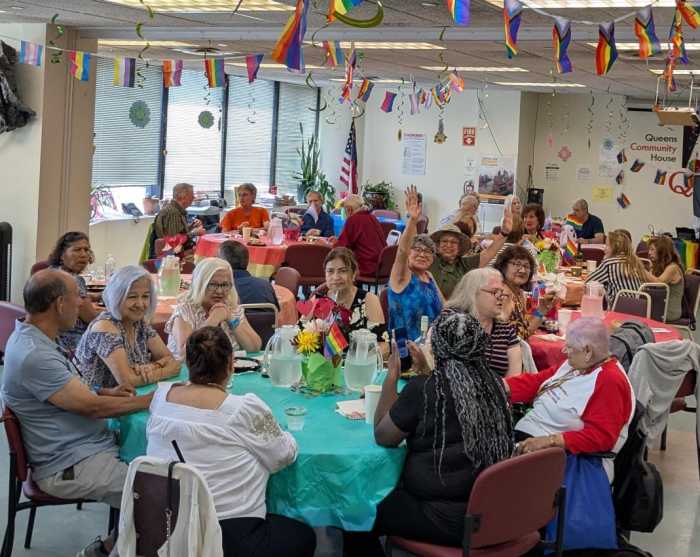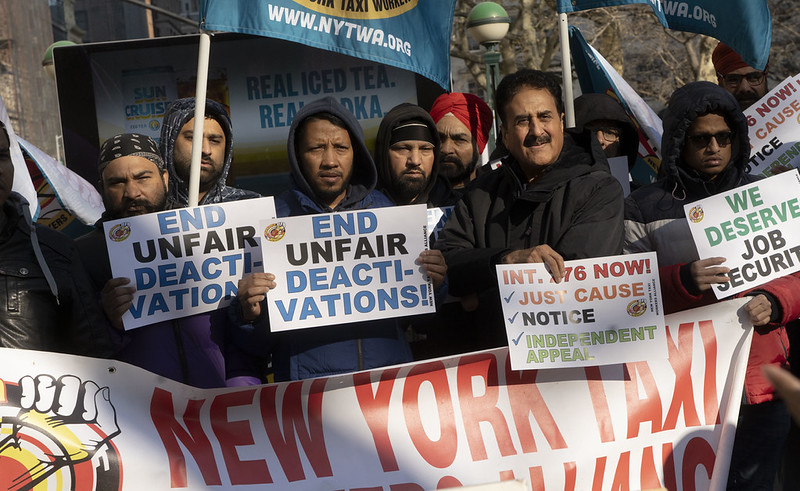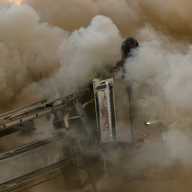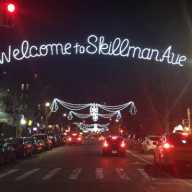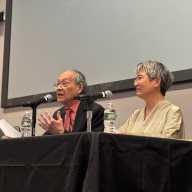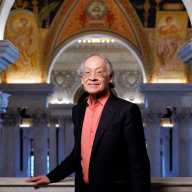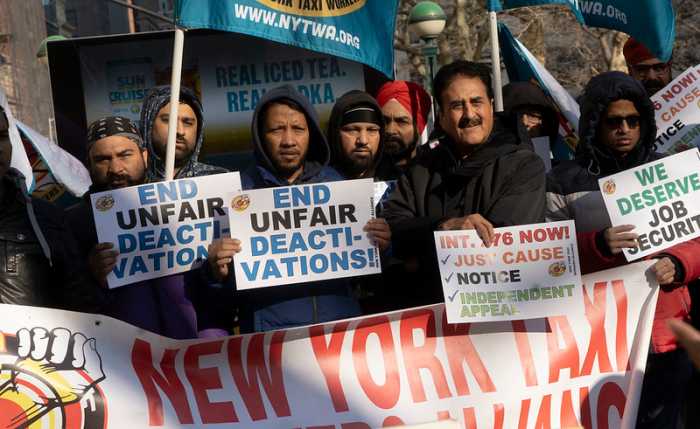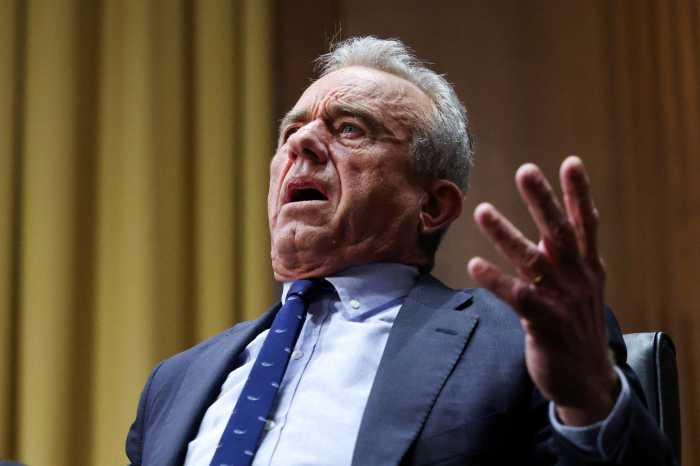The second City Council oversight hearing on the Amazon deal. (via New York City Council)
Jan. 30, 2019 By Nathaly Pesantez
Amazon and city officials returned to City Hall today to face yet another line of hard questioning and criticism over the HQ2 deal in a hearing that this time focused on the financial costs and impacts of the controversial Long Island City project.
The hearing, held by the City Council’s committee on finance, was meant to examine whether the city “is getting a good bang for its buck” in its deal with the tech giant, according to Council Member Daniel Dromm, who heads the committee. It also marked the second out of three scheduled oversight hearings on the project.
While the three-hour hearing, which saw jeers from anti-Amazon protestors and followed rallies for and against the project, centered on the numbers of the deal, much of the questioning also dealt with the company’s reputation, its union tactics, the circumvention of city approvals and the “secretive” talks that led to the bombshell HQ2 announcement—mirroring points posed at last month’s hearing.
“The council as a body has not yet determined whether the deal is a good deal or not a good deal for the city,” said Council Speaker Corey Johnson, an outspoken critic of Amazon’s plans.
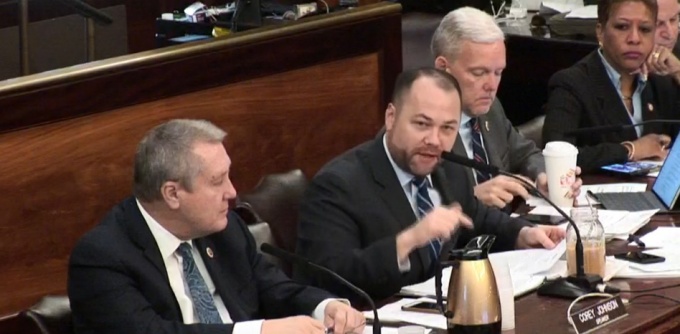
Council Speaker Corey Johnson, seated between Council Members Daniel Dromm and Jimmy Van Bramer at the Jan. 30 HQ2 oversight hearing. (via New York City Council)
Johnson noted that the City Council put together its own report on how to look at what’s on the table “before signing the dotted line,” and compared it to the financial analyses by the city Economic Development Corporation and Empire State Development, the parties involved in the Amazon deal.
The EDC summary states that the city alone will see $13.9 billion in revenue over a 25-year period beginning on 2020 as a result of Amazon’s new headquarters. Combined with numbers pulled for the state, the revenue across the board is projected at over $27 billion.
Dromm, however, asserted at the outset that the break-down provided by the two agencies does not go far enough, and reads more as a revenue-incentive report than a cost-benefit analysis.
“Neither evaluation accounted for any cost of impacts accommodating Amazon’s growth in the city,” he said, referencing the expected influx of 130,000 people because of the project as an example. “People will need to be housed, educated, transported and protected. How much will that cost?”
In the 25-page report, the City Council also challenged what the city and state describe as a “9-to-1” return on the project, referring to the approximately $3 billion incentive package for the company and the 25,000 jobs Amazon is promising, with the potential to go to 40,000.
It also stated, among its many issues, that the EDC’s tax revenue estimate was based on 40,000 new jobs being created, and that its cost analysis used the lower 25,000 number.
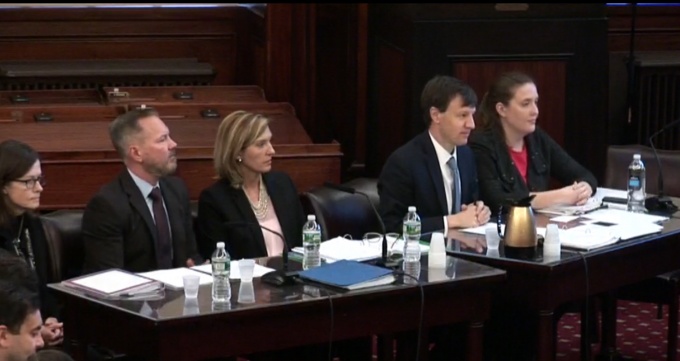
Amazon and city officials testifying at the Jan. 30 hearing, including Brian Huseman, VP Public Policy at Amazon, Holly Sullivan, Head of WW Economic Development at Amazon and James Patchett, EDC president and CEO. (via New York City Council)
Other impacts to the city budget the report asked to consider include the $5 million investment the city promised toward workforce development, the cost to relocate staff at the current Department of Education building that will form part of Amazon’s campus, and even the price on building the intermediate school worked into the deal.
Outside the city’s operations, Johnson pressed James Patchett, president and CEO of the EDC, on whether the Amazon project is better than the prior plans for the Anable Basin sites, how many jobs could have been created without the incentives, and the possible displacement of businesses and locals.
While most of the administration’s answers were broad, Patchett, as EDC and New York officials have said across the board, insisted that Amazon’s decision to locate to Queens is a “victory” for residents, and that the returns from the project will serve to address costs and other stated concerns.
“The most important benefit Amazon brings New Yorkers is economic security,” he said, noting as in the prior hearing that building a tech sector would diversify the local economy and safeguard against financial downturns.
Patchett also stood behind the EDC’s calculations on returns, and said the billions in tax revenue “will pay tremendous dividends to our public institutions,” even tying the funds toward progressive policy goals. The $13.5 billion, he said, could cover 289,000 affordable housing units, or be used to to hire and pay more than 5,000 public school teachers over two decades, for example.
“Think for a moment about the magnitude of that,” he said. “With this additional revenue, some of our boldest, most progressive ideals can become policies and our greatest needs are more likely to be met.”
Brian Huseman, vice president of public policy at Amazon who testified at the hearing, also listed several new initiatives the company is implementing that would benefit New Yorkers.
It will hire NYCHA residents, for one, to work at a new 30-person customer service center beginning next quarter, and will create a cloud computing certificate program for students at LaGuardia Community College and other CUNY and SUNY schools, ultimately aimed at providing a pathway for entry-level tech jobs. The company, as it announced yesterday, will also fund computer science courses in 132 city high schools.
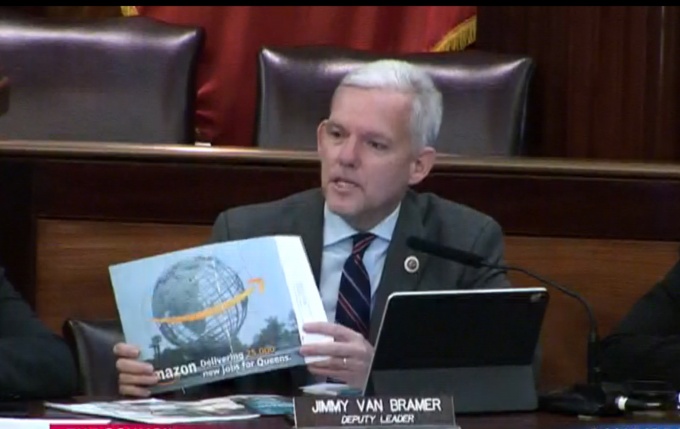
Council Member Jimmy Van Bramer, who told Amazon to stop sending “BS” mailers out to New Yorkers in its campaign for the HQ2 project. (via New York City Council)
Legislators, however, largely remained unconvinced and skeptical not only of the HQ2 deal, but of the trillion dollar corporation’s reputation and business dealings.
Johnson, who at one point said the deal “seems like vulture monopolistic capitalism at its worst,” harshly criticized Amazon for its purported work with Immigration and Customs Enforcement, and was appalled at the company’s claims that it would not remain neutral if employees wanted to unionize.
“You are in a union city,” Johnson said to Huseman in response, adding, “That is not a way to come to our city.”
Council Member Jimmy Van Bramer, a central opponent to Amazon’s presence in Long Island City, and who told the company to stop spending millions on “BS” mailers, raised the matter to a larger cause.
“The question I have been asking myself is how much is too much?” he said. “In a world where so many are hungry at night, cold all day, and unable to afford a doctor when they inevitably get sick, how can so much wealth be concentrated in one person’s hands? And how does the city and state celebrate a deal that exacerbates income inequality?”
He added: “This Amazon debacle must be an inflection point for our society.”











